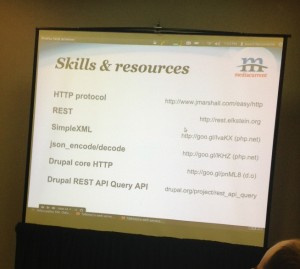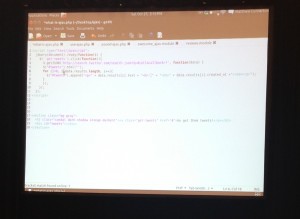Make beautiful hybrid mobile apps using HTML5, CSS and JavaScript. Works with or without any framework including Angular, Meteor, React and Vue. iOS and Android.
Source: Onsen UI 2: Beautiful HTML5 Hybrid Mobile App Framework and Tools

The 6th incarnation of Elmer's blog
Make beautiful hybrid mobile apps using HTML5, CSS and JavaScript. Works with or without any framework including Angular, Meteor, React and Vue. iOS and Android.
Source: Onsen UI 2: Beautiful HTML5 Hybrid Mobile App Framework and Tools
BetaNews: Firefox for Linux is now Netflix compatible. https://betanews.com/2017/03/22/firefox-linux-netflix/
The creator of H5P, a free and open source tool for creating interactive, HTML5 content, talks with us about the tool.
Source: A free and open source tool for creating interactive, HTML5 content | Opensource.com
H5P empowers everyone to create, share and reuse interactive content – all you need is a web browser and a web site that supports H5P.
Source: Set up H5P for Drupal
PubCSS: Formatting Academic Publications in HTML & CSS | Thomas Park. http://thomaspark.me/2015/01/pubcss-formatting-academic-publications-in-html-css/
All standard HTML5 elements are listed here, described by their opening tag and grouped by function. Contrary to the HTML Element index which lists all possible tags, standard, non-standard, valid, obsolete or deprecated ones, this list only the valid HTML5 elements. Only the elements listed here should be used in new Web sites.
The symbol This element was added as part of HTML5 indicates that the element was added in HTML5. Note that other elements listed here may have been modified or extended in their meaning by the HTML5 specification.
via HTML5 element list – Web developer guide | MDN.
Good list of standard HTML 5 elements, maintained by the folks at Mozilla.
Intention.js offers a light-weight and clear way to dynamically restructure HTML in a responsive manner.
Easily increase layout options and flexibility, reducing development time and lessening the necessity of media-query-driven stylesheet overrides.
via intention.js.
Very interesting JavaScript library that promises to provide developers with tools to dynamically restructure HTML on a page based upon the context that the page is opened in. Built in are the responses to device contexts that allow you to swap out assets and HTML based upon screen size. The really interesting thing is that you can extend it to respond to other contexts, like time of day, touch capabilities, and more.
Intention.js requires jQuery and Underscore.js to work.
On Monday of this week, somewhat quietly, we released the docs for the outliner we’ve been developing at Small Picture, Inc.
http://smallpicture.com/outlinerHowto.html
The docs are interesting, if you like outliners — but also interesting because they illustrate something important about the outliner. It’s very easy to include in a web page.
There’s a practice outliner right there on the docs page. Kind of subtle.
via Scripting News: It’s an outliner!.
If I were looking for a killer app, an outliner that runs completely in the browser and is always on the network would certainly fit the bill. And that is just what Dave Winer and his programming partner Kyle Shank are bringing us from their new startup Small Picture. Their goal is “to bring outlining software to the browser environment, in JavaScript, through the power of HTML 5.”
The outliner in a browser that’s linked in the quote above seems to really deliver. It offers all of the features that you’ve come to expect in a Winer Outliner and includes features that will appeal to programmers too. Dave promises to reveal new bits of the browser outliner over the coming Mondays, so there’s something to look forward to.
I’ll be very interested in seeing just how this outliner rolls out. A quick peek into the JavaScript that makes it go shows it’s reading/writing from a given OPML file. Going forward the ability to create, share, and collaborate on a network of OPML files is going to be where the “killer app” aspect of this product lies. I hope this means a distributed network of OPML hosts offering browser based access to the outlines.
And boy would it be nice if the server side would run on Linux.


Here are a few sites that provide some good info on HTML5, CSS3, and jQuery.
<html> element which allow you to target specific browser functionality in your stylesheet. You don’t actually need to write any Javascript to use it.”